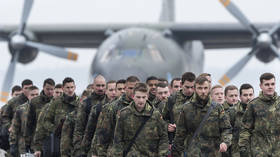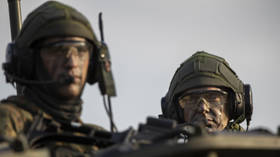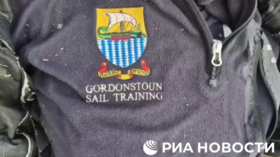NATO plans ‘military Schengen’

NATO’s European logistics chief has urged nations on the continent to establish a “military Schengen” zone to allow for the rapid movement of troops, equipment, and ammunition in the event of war with Russia.
“We are running out of time,” Lieutenant-General Alexander Sollfrank told Reuters in an interview published on Thursday. “What we don’t get done in peacetime won’t be ready in case of a crisis or a war.”
Sollfrank is in charge of NATO’s Joint Support and Enabling Command (JSEC), a facility in the German town of Ulm that coordinates the movement of the bloc’s men and materiel across the entire continent. While JSEC was established in 2021 to streamline preparations for a potential war with Russia, its work is still frustrated by national-level regulations, Sollfrank explained.
Moving ammunition across European borders often requires special permits, while large transports of troops or equipment could require advance notice, he added. Sollfrank suggested European countries should set up a “military Schengen” zone to remedy these issues, referring to the agreement that allows free travel between most EU states.
Sollfrank is not the first military official to highlight the bloc’s logistical and bureaucratic issues in Europe.
“We do not have enough transport capacity, or infrastructure that enables the rapid movement of NATO forces across Europe,” Ben Hodges, who commanded the US Army in Europe until 2017, told Reuters last year. Different countries have different railway gauges, Hodges pointed out, adding that German rail operator Deutsche Bahn only has the capacity to move one and a half armored brigades – around 4,000 troops, 90 tanks, and 150 armored vehicles – at any one time.
Moving by road presents different obstacles, Reuters reported, noting that a group of French tanks heading through Germany to Romania for an exercise last year were stopped because their weight exceeded German road traffic regulations.
Even if these tanks were allowed to pass through Germany, they would be physically unable to cross Poland due to the poor construction of bridges in the country, according to a separate report by Breaking Defense.
NATO currently has 10,000 troops in eight battle groups stationed across Eastern Europe. Secretary-General Jens Stoltenberg announced last year that he aims to back up these forward-deployed forces with 300,000 high-readiness troops in reserve. Under Stoltenberg’s plan, 100,000 of these troops would be able to reach the battlefield within a week, while the remainder would arrive a month later.
Although Russia has repeatedly warned that NATO has made itself a de facto participant in the Ukraine conflict by providing Kiev with weapons, training, and intelligence, Moscow has not threatened the bloc with war.
Nevertheless, Sollfrank argued that NATO must prepare itself for such a conflict. “We need to be ahead of the curve, we have to prepare the theater well before Article 5 has been invoked,” he told Reuters, referring to the bloc’s common defense clause.














